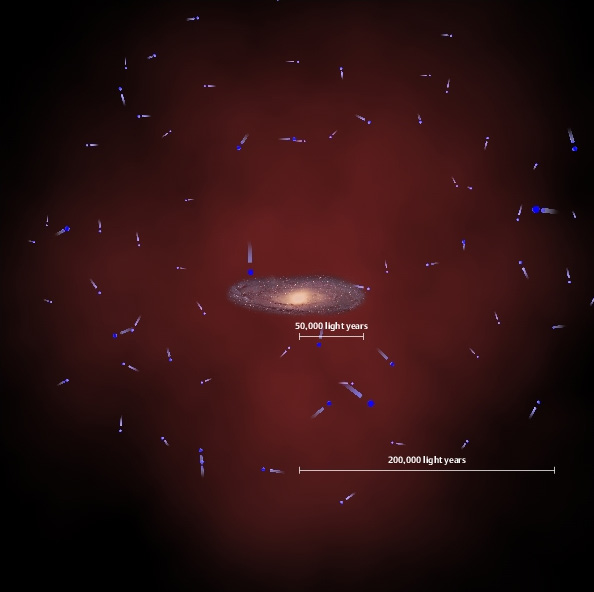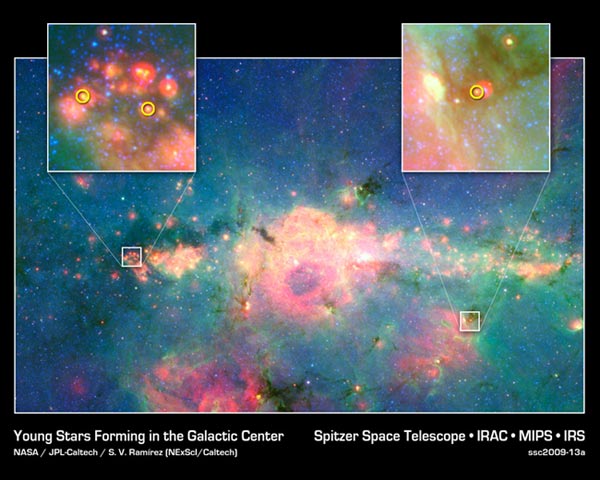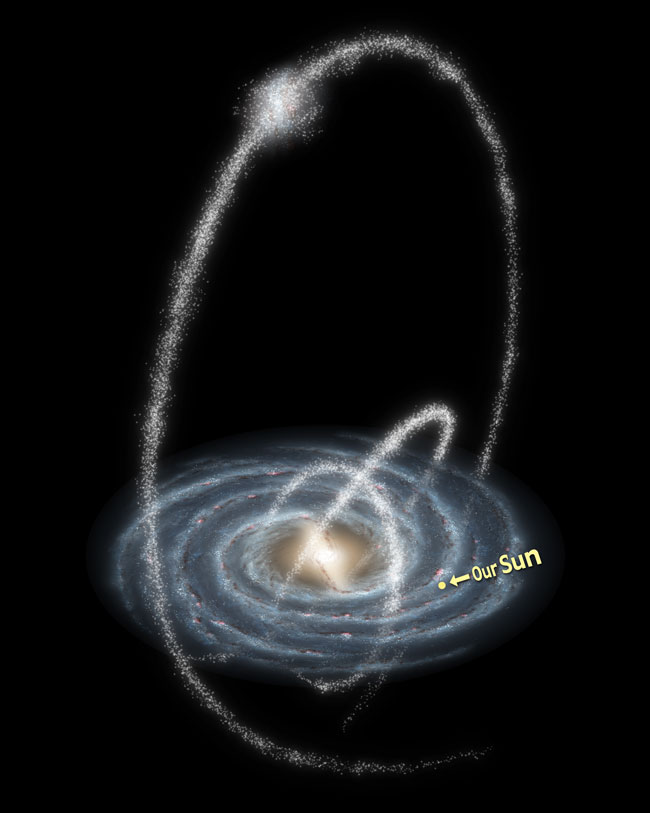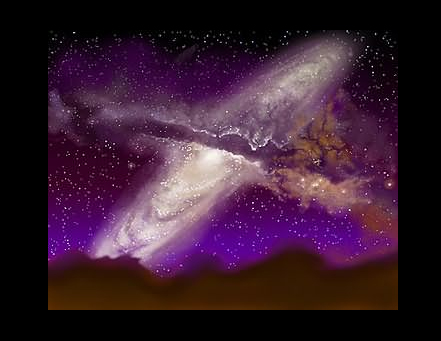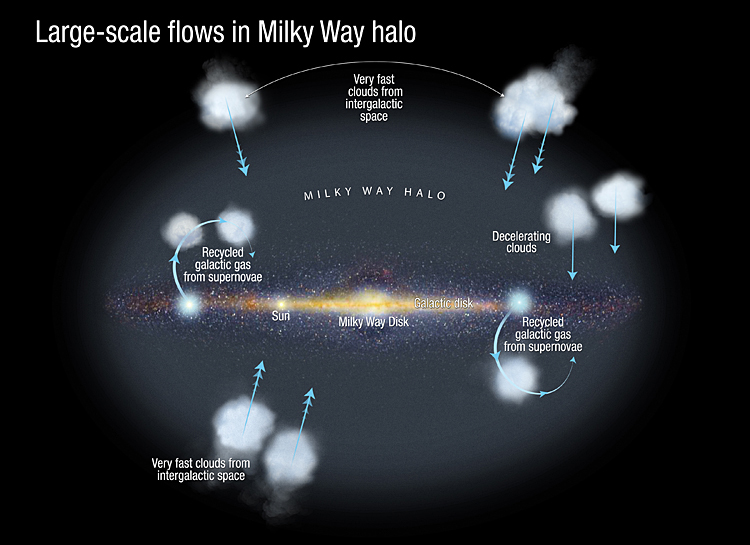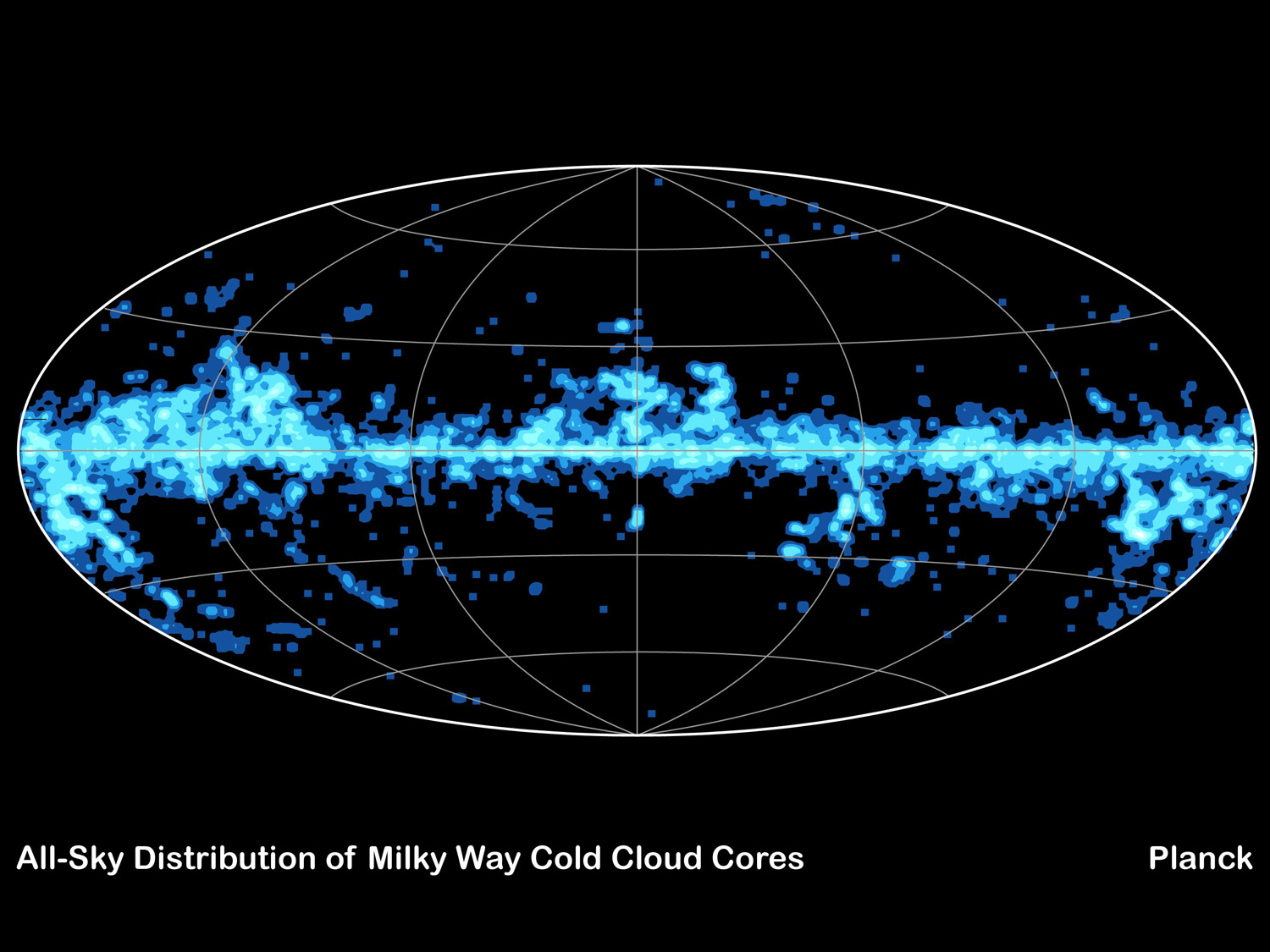Stunning Photos of Our Milky Way Galaxy (Gallery)
The Milky Way Is Weighed
By measuring the speeds of distant stars, researchers estimated the mass of the Milky Way's dark matter halo (indicated in dim red), finding it to be much slimmer than previously thought.
Baby Stars Found in Galactic Center
The yellow circles show the young stars that were detected in the chaotic environment at the Milky Way's center.
Streams of Stars Reveal Cannibal Nature of Milky Way
Three new streams of stars were discovered ringing the Milky Way. The two closest streams are thought to be star clusters, while the huge arcing stream is thought to be a dwarf galaxy.
Earth Biodiversity Pattern May Trace Back to Bobbing Solar System Path
As the sun orbits around the center of the Milky Way, it bobs up and down relative to the plane of the galactic disk. Every 64 million years, our solar system pops above the "northern" edge of the disk, exposing Earth to a barrage of dangerous cosmic rays that may be affecting biodiversity on the planet.
Milky Way and Andromeda Galaxy Collision
An artist's rendition of the collision between the Milky Way and the Andromeda galaxy. The results, however, may be more atypical than previously expected.
Large-scale Flows in Milky Way Halo
Clouds of gas that rain down upon the Milky Way form from a variety of sources. Some drift between galaxies in space. Others are recycled from supernovas, whose force ejects them from the galaxy. When gravity acts on these clouds, they bind together to form new stars.
Clumps of Star-forming Cores Across the Sky
This map illustrates the numerous star-forming clouds, called cold cores, that Planck observed throughout our Milky Way galaxy. Planck, a European Space Agency mission with significant NASA participation, detected around 10,000 of these cores, thousands of which had never been seen before.
Breaking space news, the latest updates on rocket launches, skywatching events and more!
Milky Way Over Mount Rainier National Park
The Milky Way shines over Mount Rainier National Park, Washington in this image sent to SPACE.com. Paula Cobleigh captured the photo on Oct. 25, 2013. Lights from the town of Cle Elum appear in the background. [See full story.]

Space.com is the premier source of space exploration, innovation and astronomy news, chronicling (and celebrating) humanity's ongoing expansion across the final frontier. Originally founded in 1999, Space.com is, and always has been, the passion of writers and editors who are space fans and also trained journalists. Our current news team consists of Editor-in-Chief Tariq Malik; Editor Hanneke Weitering, Senior Space Writer Mike Wall; Senior Writer Meghan Bartels; Senior Writer Chelsea Gohd, Senior Writer Tereza Pultarova and Staff Writer Alexander Cox, focusing on e-commerce. Senior Producer Steve Spaleta oversees our space videos, with Diana Whitcroft as our Social Media Editor.
